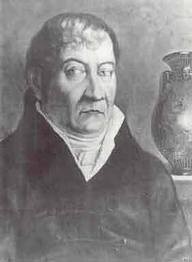Joseph Hardtmuth
- View a machine-translated version of the German article.
- Machine translation, like DeepL or Google Translate, is a useful starting point for translations, but translators must revise errors as necessary and confirm that the translation is accurate, rather than simply copy-pasting machine-translated text into the English Wikipedia.
- Do not translate text that appears unreliable or low-quality. If possible, verify the text with references provided in the foreign-language article.
- You must provide copyright attribution in the edit summary accompanying your translation by providing an interlanguage link to the source of your translation. A model attribution edit summary is
Content in this edit is translated from the existing German Wikipedia article at [[:de:Joseph Hardtmuth]]; see its history for attribution. - You may also add the template
{{Translated|de|Joseph Hardtmuth}}to the talk page. - For more guidance, see Wikipedia:Translation.

Joseph Hardtmuth (13 February 1758, Asparn an der Zaya – 23 May 1816, Vienna) was an Austrian architect, inventor and entrepreneur.
Inventions
In 1789, he invented a new kind of earthenware with a lead-free glaze for tableware production, the so-called Vienna ware. In 1810, he invented an artificial pumice and years later, a version of stoneware which was used to make mortars, funnels, and other utensils. A flexible, unbreakable blackboard was also produced.
In 1792, Hardtmuth established a pencil factory in Vienna after he succeeded in creating an artificial graphite pencil by mixing powdered graphite with clay. Until that time, whole pieces, cut from graphite, were glued in between wood and were imported from England. With the new method, graphite of inferior quality could be used in pencil manufacturing, lowering the price and making the product more accessible for the masses. His company Koh-i-Noor Hardtmuth still exists.
The extensive Liechtenstein possessions led him to Bohemia, Moravia and again to Lower Austria as building director. He was commissioned with the conversion of farm buildings and castles, the construction of schools and patron churches and other construction measures such as the creation and design of landscape gardens.[1] He built i.a. Obelisks, triumphal arches, exotic buildings and artificial ruins. In 1811 there was a construction accident when a lookout tower collapsed on the Kleiner Anninger during construction. This incident led to the end of his work as princely building director in 1812.[2]
References
- Petroski, Henry (1990). The Pencil: a history of design and circumstance. Random House. pp. 385–407. ISBN 0-394-57422-2.
External links
- The Koh-i-noor company website
- THE KOH-I-NOOR HARDTMUTH story, a tradition of innovation - ChartPak's write up
- v
- t
- e








